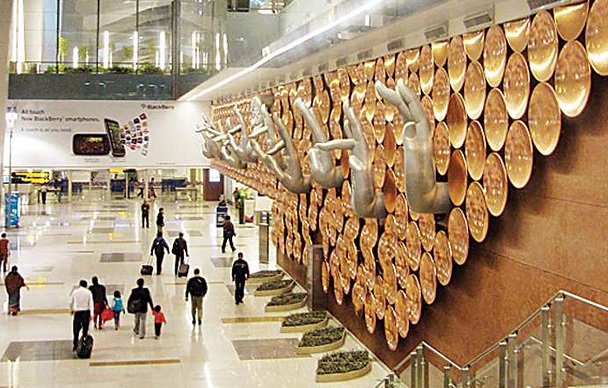The Metamorphosis is more than just a great Kafka read. The term is commonly associated with the inspirational story of a caterpillar spinning itself into a silky cocoon and morphing into a butterfly. But leaving that aside, our curiosity is reduced only to appreciating its beauty. And as quick as they are, it is often difficult to capture one – the Blue Mormon though, requires very little effort.
In 2015, the government of Maharashtra declared the species as its official state butterfly. The insect, with a wingspan of 12 cm to 14 cm, is the second largest of its kind to be found in the state after the Southern Birdwing. It belongs to the family Papillonidae or Swallowtails denoting large, colourful butterflies. The word mormon is believed to have been borrowed from the sect owing to its polygamous nature. “The coloration is what makes the species distinct with blue stripes against a black background. It’s indigenous to India and Sri Lanka, and although you can spot it in Mumbai, they are easy to spot in heavy rainfall areas,” says Asif Khan of the BHNS.

Ovalekar Wadi, Thane. Pic/Asif Khan
The butterfly can be spotted in the city when the monsoon arrives in June. They breed in low-lying areas and move towards the higher reaches of the Sahyadris in December. “It is found in thick forest patches, from moist deciduous to evergreen, though sometimes you can find them in urban areas due to their larval host plants which belong to the Citrus family,” says Neha Mujumdar, research fellow at the BNHS.
With the BMC’s Coastal Road Project in place, a plan has been floated to develop a botanical butterfly garden with a budget of Rs 10 crore. Although appreciative of the move, according to naturalist Shardul Bajikar, Mumbai’s biodiversity is enough for the whole city to be qualified as a butterfly garden. “Minute modifications in our urban layout can make it very friendly for biodiversity. Even today, a mundane traffic island like the one near Churchgate station hosts about 15 to 20 butterfly species. I urge the BMC and MMRDA to convert every traffic island, every small garden into biodiversity friendly spots by just planting indigenous, native flowering, fruiting plants, and installing water cisterns, which in turn will attract butterflies, bees, and birds,” Bajikar suggests.
Dos and Dont’s while spotting butterflies
* While spotting their early life stages like eggs, caterpillars or pupa, do not handle them or touch them just for the sake of a photograph
* Do not disturb a mating pair
* Always wear camouflaging clothes when you’re out to capture a butterfly and approach them slowly and carefully
* The best time to photograph them is when they are basking in the sun early morning to raise their body temperature to a certain limit
* Carry a macro lens for photography
Where to spot the mormon
* Ovalekar Wadi, Call: 9820779729
* Sanjay Gandhi National Park
* Aarey Milk Colony
* Hanging garden, Malabar Hill
* Karnala bird sanctuary
 Indo Canadian News News That Matters
Indo Canadian News News That Matters






